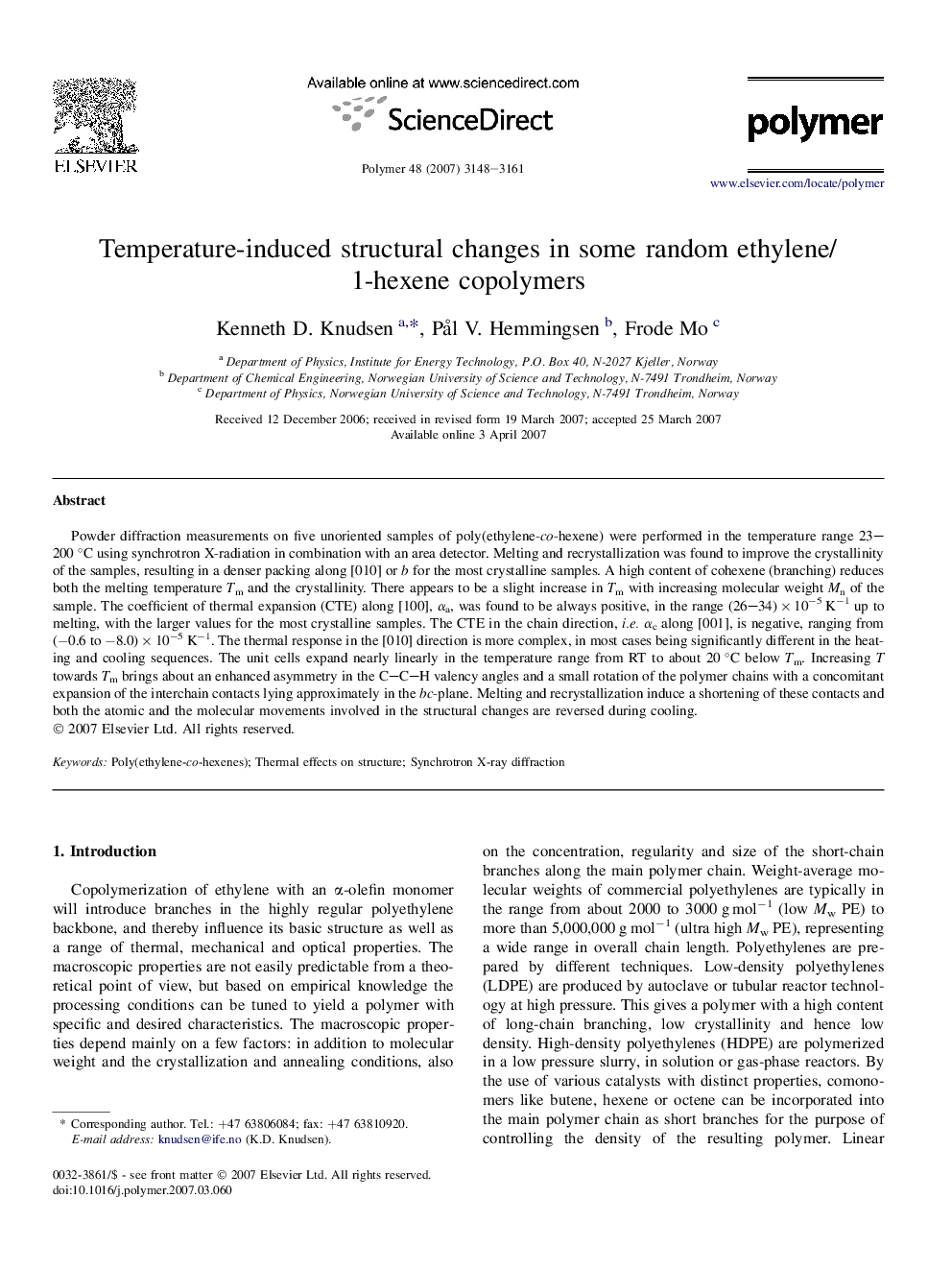| Article ID | Journal | Published Year | Pages | File Type |
|---|---|---|---|---|
| 5187980 | Polymer | 2007 | 14 Pages |
Abstract
Powder diffraction measurements on five unoriented samples of poly(ethylene-co-hexene) were performed in the temperature range 23-200 °C using synchrotron X-radiation in combination with an area detector. Melting and recrystallization was found to improve the crystallinity of the samples, resulting in a denser packing along [010] or b for the most crystalline samples. A high content of cohexene (branching) reduces both the melting temperature Tm and the crystallinity. There appears to be a slight increase in Tm with increasing molecular weight Mn of the sample. The coefficient of thermal expansion (CTE) along [100], αa, was found to be always positive, in the range (26-34) Ã 10â5 Kâ1 up to melting, with the larger values for the most crystalline samples. The CTE in the chain direction, i.e. αc along [001], is negative, ranging from (â0.6 to â8.0) Ã 10â5 Kâ1. The thermal response in the [010] direction is more complex, in most cases being significantly different in the heating and cooling sequences. The unit cells expand nearly linearly in the temperature range from RT to about 20 °C below Tm. Increasing T towards Tm brings about an enhanced asymmetry in the C-C-H valency angles and a small rotation of the polymer chains with a concomitant expansion of the interchain contacts lying approximately in the bc-plane. Melting and recrystallization induce a shortening of these contacts and both the atomic and the molecular movements involved in the structural changes are reversed during cooling.
Keywords
Related Topics
Physical Sciences and Engineering
Chemistry
Organic Chemistry
Authors
Kenneth D. Knudsen, PÃ¥l V. Hemmingsen, Frode Mo,
